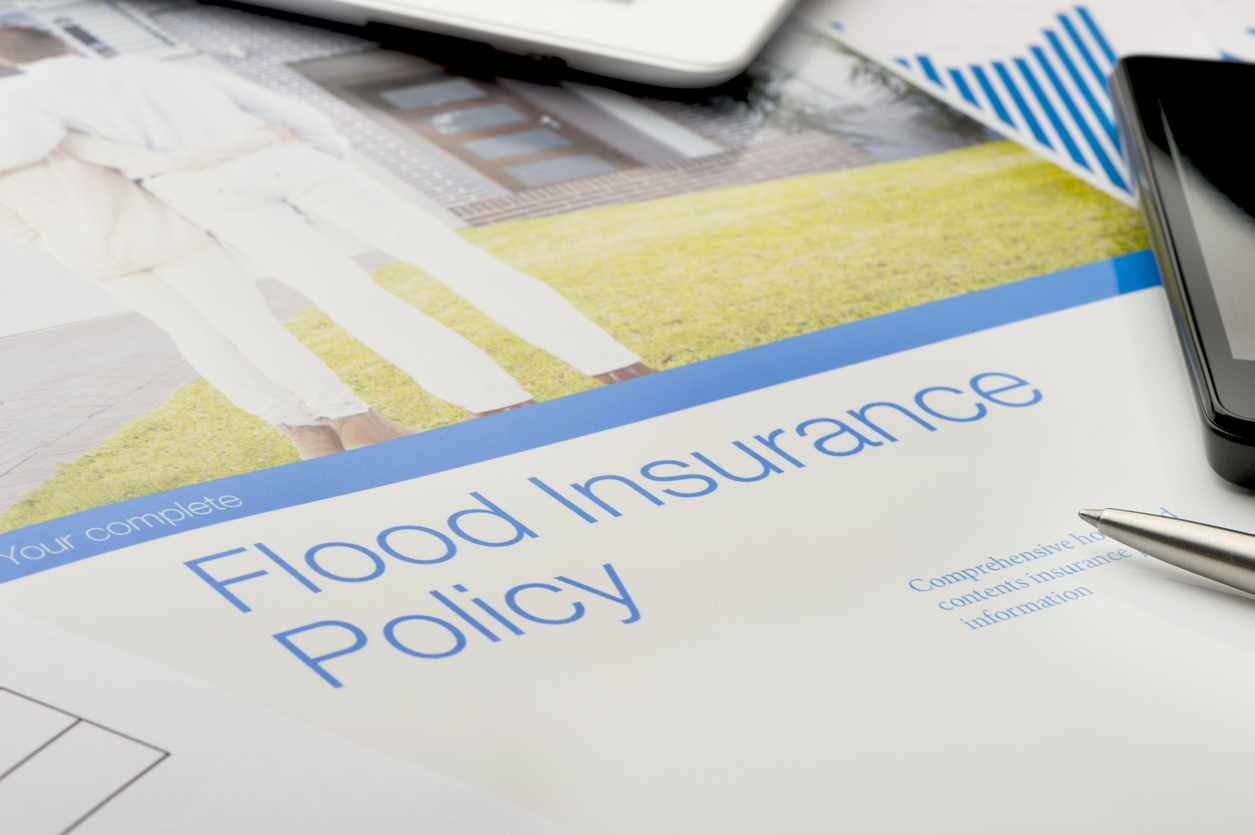How Do I Find Out if my Property is In a Flood Zone?

Many homeowners mistakenly think that their homeowner’s insurance policy will cover them if water enters their home or other structure on their property.
That’s only half-true. Homeowner’s insurance policies usually only cover damage from water that enters from above or within (i.e. rainwater that enters through a broken roof, or a pipe breaking) … but it doesn’t cover water that enters from ground level — runoff, bad drainage, surface water, burst water mains, or overflowing rivers and canals.
For this kind of damage, you need separate insurance — flood insurance. Your mortgage lender may require you to get flood insurance if your property is located in a designated flood zone.
But what if your lender misses this detail? Or what if you do not have a mortgage? Also, flood zones aren’t perfect. Long story short — your home could be at risk of catastrophic flood damage and you don’t even know it. It may be time to do some at home research for yourself and make an informed decision if you want flood insurance to protect your precious assets.
So what is a flood zone? How can you tell if your property lies in one, and what should you do about it?
What Is a Flood Zone?
A flood zone is an area designated as having a high risk of flooding on a Special Hazard Boundary Map (SHBM). These maps are created and maintained by the U.S. Federal Emergency Management Agency (FEMA). They designate “100-year flood plans,” specifying the likelihood of a flooding event over the course of 100 years on a particular parcel of land.
Flood zones date back to the National Flood Insurance Act of 1968, which charged FEMA with keeping the maps. It also created the National Flood Insurance Program, a Federal agency that insures flood insurance the way Fannie Mae insures mortgages.
How do I Find Out if I’m In a Flood Zone?
There are two ways homeowners and home buyers typically find out about their flood risk …
Your Lender Requires It
If you buy a home with a mortgage or if you refinance, your mortgage lender will almost certainly check the flood plain status of the property. Most lenders check this by obtaining a flood certification document from a company like SnapFlood. If your home floods and insurance doesn’t cover it, the lender loses the collateral for the loan. They have an understandable interest in making sure that does not happen.
If your lender requires flood insurance, you’re in a flood zone.
Look Online
On the other hand, a mortgage lender may miss this detail, or you may not even have a mortgage. You may still want protection in case of flooding … so how do you find out for yourself if you are in a flood zone?
The easiest way is to go to the FEMA website. The Flood Map is a matter of public record, and FEMA maintains a public GIS map layer of its flood zones online. It may seem intimidating, but it is actually quite easy to use.
Go to fema.gov and select “Floods and Maps” from the top menu bar. Under “Flood Maps,” select “National Flood Hazard Layer.”
Scroll down and click on “FEMA’s Map Service Center.” You will be taken to a page where you can enter an address. You can also enter coordinates in longitude and latitude.
Once you enter the address or coordinates, you will be presented with a map with the property pinpointed and a shaded map overlay indicating the property’s FEMA-assessed flood risk. Check the map key below to identify what the shading means.
If the shading indicates that your property is in a zone designated with an “A” or a “V,” you are in a flood zone (aka a “Special Flood Hazard Area.”)
If the zone starts with “X,” it has a “moderate” or “minimal” flooding risk profile.
If you are in Zone “D,” your flood risk is unknown. Zone D may also be an area that is at risk of flooding due to its proximity to a levee.
I’m Not in a Flood Zone … Do I Still Need Flood Insurance?
The short answer is, possibly. The August 2021 rainstorms in Middle Tennessee offered stark proof. In addition to over 20 fatalities and loss of power to over 4,200 households, over 700 homes flooded, including homes that were not insured against flooding.
According to the New York Times, it turned out that two of the most affected counties — Humphreys and Hickman — were using flood maps that hadn’t been updated for over 12 years. This was despite the fact that FEMA was required by law to update the maps every five years.
The bottom line — even Federal agencies aren’t perfect, and consumers suffer when they don’t get proactive about their risk factors. Flooding is the most common source of property damage by natural disasters, far more common than tornado or earthquake damage.
Due to climate change, flood risks are also consistently increasing and projected to get worse. According to the EPA, “The average 100-year floodplain is projected to increase 45 percent by the year 2100, while the annual damages from flooding are predicted to increase by $750 million.” Even if your home is not situated in a Federally-designated flood zone, it may be worth the peace of mind to independently investigate your flooding risk.
How Can I Determine my Flood Risk?
Whether or not your lender requires that you get flood insurance, it may be worth it to get a customized assessment of your flood risk.
If nothing else, this may allow you to save money on your flood policy. At best, you may discover that your risk of flooding is higher than the FEMA map designates, and you need extra flood insurance, as well as home improvements, to protect your assets.
To accurately determine your risk of flooding, consider getting:
Personalized Flood Risk Analysis
A personalized flood risk analysis is a comprehensive, third-party analysis of the flooding risk of a particular parcel. FEMA uses flood risk analyses to make its maps, but there’s no reason you can’t get one independently for your own peace of mind and risk management plan.
Elevation Certificates
The peak of Mount Everest has an elevation of 29,031.7 feet above sea level. Your home also has an elevation and knowing it can be key to assessing your risk of flooding.
An elevation certificate stipulates the elevation of various parts of your home structure, including the “base floor elevation” (BFE, usually the point of entry) and the “lowest floor elevation” (LFE, usually the highest flood-risk area of the home.
Scientists study the chances of floodwaters rising to certain elevations, so knowing the actual elevation of the vulnerable portions of your home goes a long way towards assessing its risk of flooding.
—————————————————————————————————
Even if you do live in a flood zone, there’s no need to panic. Many people around the nation successfully live in homes on flood plains. It may just takes a few extra steps to manage the extra risk.

